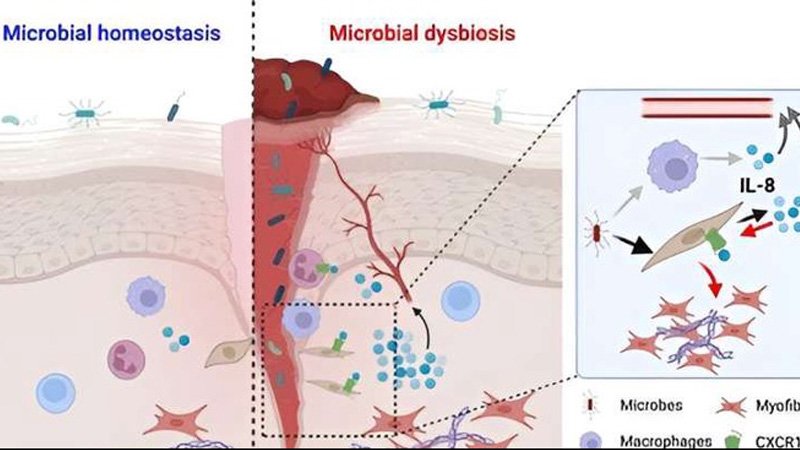
Getty
Research has uncovered fascinating insights into the pathology of keloid disease, shedding light on the role of IL-8 and microbiota in the development of keloids. A recent study published in PNAS Nexus delves into the intricate microbiome of keloids, which are notoriously resistant to raised scars.
Exploring Keloid Microbiome
While some wounds heal without a trace, others leave behind scars. Keloids, however, represent a distinct challenge as they manifest as raised, enlarging bumps that can be more bothersome than the initial injury. These keloids are characterized by the hyperproliferation of fibroblasts that generate collagen.
Impact of Microbiota
Previous studies have hinted at the potential influence of microbiota on fibroblast activity. Rui Chen, Tomasz Maj, and their research team examined clinical samples of keloid tissue, revealing elevated bacterial levels and a diverse range of bacteria, particularly in the deeper layers of keloids, compared to healthy skin. reported by Medical Xpress.
Uncovering Inflammatory Links
Further investigations on patients indicated that while surface bacteria compositions were similar in both keloid and normal skin, deep skin layers in keloids exhibited a higher bacterial diversity, with some species known to induce inflammation. Notably, the presence of keloid-specific bacteria was associated with an increase in interleukin-8 production, triggering fibroblast migration and collagen synthesis.
Potential Therapeutic Strategies
The researchers suggest that keloids represent a disruption in the typical wound healing process, where fibroblasts perpetuate inflammation and migration excessively. They propose that targeting the bacterial component with antibiotics or phage treatments could help modulate this aberrant healing response and enhance therapeutic outcomes. told by NIH.
This groundbreaking study by Wenyu Zhang et al., titled ‘Commensal microbiome dysbiosis elicits interleukin-8 signaling to drive fibrotic skin disease’ in PNAS Nexus, provides valuable insights into the intricate mechanisms underlying keloid pathology. By unraveling the role of microbiota and interleukin-8 in keloid development, this research opens up promising avenues for novel therapeutic interventions. Stay tuned for further advancements in the field of keloid disease research.






